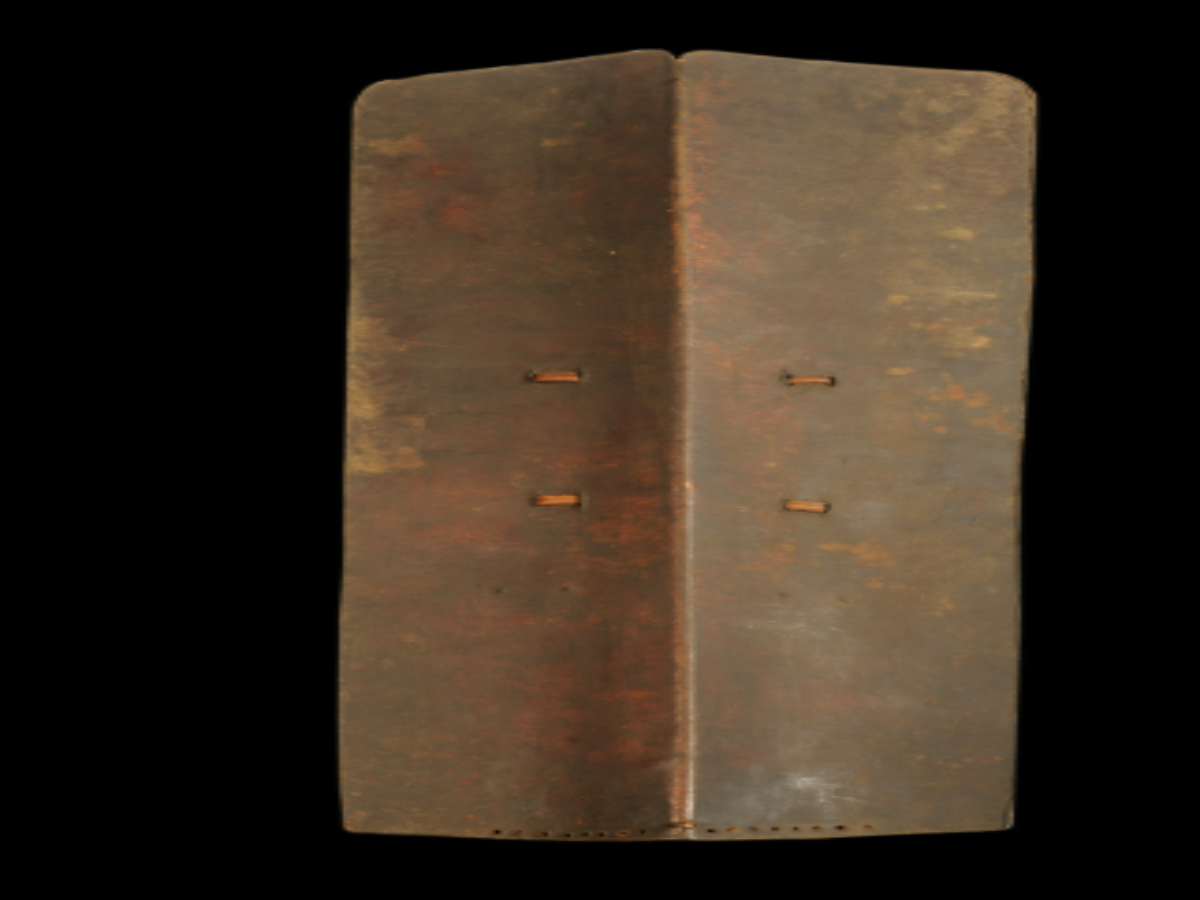State
Tribe Name
Art Type
short description
The shield is rectangular and made of leather, a buffalo hide traditionally belonging to the Konyak and Sema Naga tribes of Nagaland, India. This ethnographic equipment testifies for the warriors of the Konyak and Sema Naga tribes of India, found in the Northeast area. This shield shows a big central ridge on the upper surface that brings in structural and symbolic importance incorporated into its front part as a corresponding lengthwise groove on the ventral side of the shield, which ultimately adds to shock absorption during combat. A semi-circular cane handle is fixed centrally and reinforced with two cross-wise and two vertical cane straps, all wound securely with twisted cane strips.
Thumbnail

Filter Postion
Left
Filter Background
Off
Theme
Filter Header Image

content
Image

description
The shield is rectangular and made of leather, a buffalo hide traditionally belonging to the Konyak and Sema Naga tribes of Nagaland, India. This ethnographic equipment testifies for the warriors of the Konyak and Sema Naga tribes of India, found in the Northeast area. This shield shows a big central ridge on the upper surface that brings in structural and symbolic importance incorporated into its front part as a corresponding lengthwise groove on the ventral side of the shield, which ultimately adds to shock absorption during combat. A semi-circular cane handle is fixed centrally and reinforced with two cross-wise and two vertical cane straps, all wound securely with twisted cane strips.
The whole construction is such that it provides a firm, well-balanced grip for the warrior, enabling him to use it in battle easily. To this, a last augmenting twisted cane strip was added, showing the great knowledge of the tribe in local materials and their multifunctional use in warfare and utility tools. The Konyak and Sema Naga tribes have long had the reputation of being the great warriors. Until the middle of the twentieth century, many village skirmishes took place, and headhunting was not an uncommon practice among these tribes. Such a shield could not only protect the user but also have rituals and be part of the symbolic status of a person; these could be handed down to later generations or sometimes used during ceremonial dances and tribal gatherings .This shield is a testimony to the martial culture, craftsmanship, and versatility of the Naga tribes. Its conservation adds to the knowledge of the socio-cultural fabric, history, and indigenous military history of northeastern India.
The whole construction is such that it provides a firm, well-balanced grip for the warrior, enabling him to use it in battle easily. To this, a last augmenting twisted cane strip was added, showing the great knowledge of the tribe in local materials and their multifunctional use in warfare and utility tools. The Konyak and Sema Naga tribes have long had the reputation of being the great warriors. Until the middle of the twentieth century, many village skirmishes took place, and headhunting was not an uncommon practice among these tribes. Such a shield could not only protect the user but also have rituals and be part of the symbolic status of a person; these could be handed down to later generations or sometimes used during ceremonial dances and tribal gatherings .This shield is a testimony to the martial culture, craftsmanship, and versatility of the Naga tribes. Its conservation adds to the knowledge of the socio-cultural fabric, history, and indigenous military history of northeastern India.
Image Mode
landscape
promoted
On
Verified
Off
